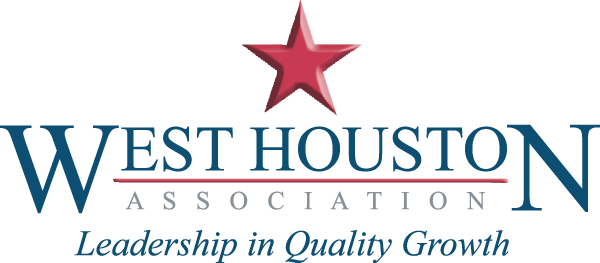
During a panel discussion hosted by the West Houston Association’s Education and Workforce Development Committee on August 12th, 2020, our Rising Leaders learned about the progress being made in a key component of the West Houston 2060 Plan.
The round table session focused on the collaboration that led to the University of Houston (UH) and Houston Community College (HCC) establishing the UH/HCC Engineering Academy at Katy. Panelists covered the current state of educational opportunities and workforce needs that the Academy is poised to help shape, as well as forecasted labor force demands in the future.
The event, which was held virtually, was moderated by Andrew Van Chau, a Committee member with over 25 years of experience in the energy sector that included working on economic and workforce development initiatives. The panel consisted of Susan Thompson, the Program Director for Engineering & STEM (Science, Technology, Engineering & Math) initiatives at Houston Community College; John Vasselli, Dean of the Engineering Center of Excellence at Houston Community College; Dr. J.R. Rao, faculty in the Cullen College of Engineering at University of Houston; and recent WHA Compass Award winner and owner of WC Engineers, Bill Callegari.
Dr. Zachary Hodges, President of HCC Northwest and Committee Chair of WHA’s Education and Workforce Committee, kicked off the session. He did so by challenging the panel to address what has been done since the establishment of the Academy as well as the shifting labor market trends for engineering due to the pandemic and low oil price environment.
Bill Callegari started by providing historical background that led to the Academy’s founding in Katy to close expected skills gaps and create opportunity. “If you have an Engineering degree, you’ll never have to worry about a job,” stated Callegari. Engineering teaches students how to solve problems, a valuable skill set in the labor force regardless of industry. Van Chau highlighted that many engineers who are laid off or retire early often shift to other industry sectors where they successfully apply their expertise in new areas.
Susan Thompson elaborated on academic pathways in engineering that take root in secondary education and continue through post-secondary. “Engineering starts in middle school and it starts with calculus,” said Thompson. She detailed some of the new course offerings at the Academy in Katy and how they are designed to help students earn their degree.
John Vasselli focused on community partnerships and the concerns with the aging Engineering labor market. “To me, ‘American know-how’ is engineering…and it’s in jeopardy if we don’t fill the 70,000 engineering roles needed,” said Vasselli. There are 28 different degrees offered between current community partners to help meet industry needs. An added benefit of these partnerships is that they also offer greater opportunities to a more diverse population.
Dr. J.R. Rao elaborated on how the institutions working together adds value for the students and saves them money. “Students are dual enrolled in HCC and UH Katy from day one,” said Rao as he highlighted that five of the eight majors offered at the University of Houston are offered in Katy.
The panel discussion ended with a question and answer session, which brought in some of the other workforce challenges in West Houston such as the increasing demand for health care professionals as well as changes in the technology and innovation space. Moving forward the committee plans to continue to engage the community to best understand education and workforce needs in order to work towards developing solutions.
